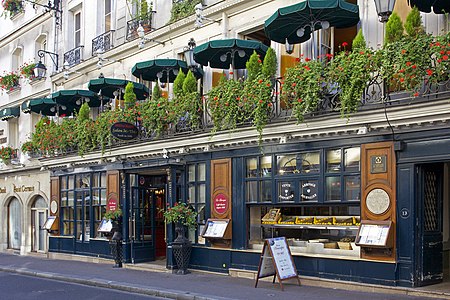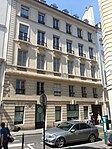Café Procope
1680s establishments in France1686 establishments in FranceBakery cafésBuildings and structures in the 6th arrondissement of ParisCoffeehouses and cafés in Paris ... and 1 more
Restaurants in Paris

The Café Procope, in rue de l'Ancienne Comédie, is a café in the 6th arrondissement of Paris. It was opened in 1686 by the Sicilian chef Procopio Cutò (also known by his Italian name Francesco Procopio dei Coltelli and his French name François Procope), and was a hub of the artistic and literary community in 18th and 19th century Paris. It sometimes is called the oldest café of Paris in continuous operation- however, the original café closed in 1872 and did not reopen as a café until the 1920s, so the claim of "oldest café in continuous operation" is not entirely true. Marie Antoinette and Napoleon frequented the restaurant.
Excerpt from the Wikipedia article Café Procope (License: CC BY-SA 3.0, Authors, Images).Café Procope
Boulevard Saint-Germain, Paris 6th Arrondissement (Paris)
Geographical coordinates (GPS) Address Nearby Places Show on map
Geographical coordinates (GPS)
| Latitude | Longitude |
|---|---|
| N 48.852496 ° | E 2.338811 ° |
Address
Relais Odéon
Boulevard Saint-Germain 132
75006 Paris, 6th Arrondissement (Paris)
Ile-de-France, France
Open on Google Maps









